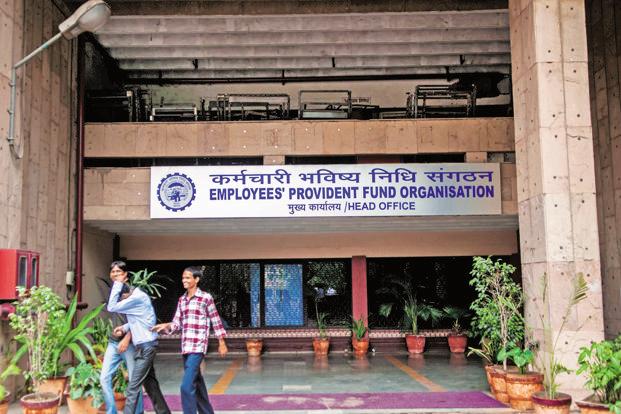Employees’ Pension Scheme (EPS), Know, how and when you can withdraw from your EPS account – The Employees’ Provident Fund (EPF) corpus also has a pension component i.e. Employees’ Pension Scheme (EPS). Most employees majorly in private sectors are members of the Employees’ Provident Fund (EPF) and have EPF accounts. Check it out, how and when you can withdraw from your EPS account.
Who can withdraw from EPS account?
Key Highlights :
- 1 Who can withdraw from EPS account?
- 2 How much can one withdraw from EPS account?
- 3 Note: The above table is based on a flat addition in benefit. Source: Deloitte Certificate of pension
- 4 Income Tax on EPS withdrawal
- 5 What if you have withdrawn money from EPF account due to job loss?
- 6 How is Employees’ Pension Scheme account funded?
- 7 Make it Popular:
As per the existing guidelines, the lump sum withdrawal of money from the EPS account is allowed in two situations.
1. As per EPS rules, if any member has completed less than 10 years of service on the date of exit (date on which the member leaves the job in the organisation) or has attained the age of 58 years (whichever is earlier), then the individual is eligible for lump-sum withdrawal from the EPS account.
2. If such an individual is less than 58 years of age on the date of exit the employee may opt for a Scheme Certificate under the EPS instead of lump sum withdrawal.
3. Such Scheme Certificate may be taken when the individual plans to join back another employment later.
4. Scheme Certificate will be issued to the individual, If the number of years of service exceeds 10 years.
Employees’ Provident Fund Organisation (EPFO) calculates the number of years of service from the date of joining the EPF scheme. This is to remember that it is not necessary that the number of years of service be continuous.
How much can one withdraw from EPS account?
The lump sum withdrawal from the EPS scheme is allowed only if the service period is less than 10 years. The lesser the number of years of service the lower will be the amount give to you in case of lump sum withdrawal before completion of 10 years. Prior to September 2014 , the maximum amount that could be contributed to the EPS scheme was Rs 541 per month. As per the current laws, it is Rs 1,250 per month
The amount that will be returned to you will be based on Table-D mentioned in EPS Scheme 1995. For e.g., if the service is for 5 years, then the amount of money that will be returned to you will be based on the last drawn wages multiplied by a factor indicated in table D.
TABLE D
Return of contribution on exit of employment
| Years of Service | Proportion of wages at exit |
| 1 | 1.02 |
| 2 | 1.99 |
| 3 | 2.98 |
| 4 | 3.99 |
| 5 | 5.02 |
| 6 | 6.07 |
| 7 | 7.13 |
| 8 | 8.22 |
| 9 | 9.33 |
Note: The above table is based on a flat addition in benefit. Source: Deloitte
Certificate of pension
This is the certificate issued if the number of years of service is more than 10 years. The certificate of pension mentions the pensionable service, pensionable salary and the amount of pension due on the exit from the employment. In case the employee is subsequently employed in an establishment coverable under the scheme, his/her earlier service as per the scheme certificate shall be reckoned for pension along with new period of pensionable service.
Benefits
1. If an individual holds Scheme Certificate with eligible service of 10 years or more, under the EPS, he / she will be eligible for a monthly pension from the age of 58 years of age.
2. An individual can apply for an early pension at the age of 50 years as well.
3. In such a case the monthly pension received at the age of 50 years of age will be lower than the pension that an individual will be eligible for at the age of 58 years of age.
Read – How To Claim Provident Fund Withdrawal in Just 3 Hours ?
Income Tax on EPS withdrawal
Any lump sum withdrawal from the EPS account will be taxable as per the law.
What if you have withdrawn money from EPF account due to job loss?
Under the EPF scheme, a member has the option to withdraw the full corpus and close the account in the event of job loss. The lump sum complete withdrawal from EPF and EPS account (provided number of years of service is less than 10 years) can be done at the time of closing of account in the event of job-loss (and remaining unemployed for over 2 months), or at the time of retirement, death or due to permanent and total disability of member.”
While withdrawing money from the EPF account, it is important to select the option of pension withdrawal benefits in the composite claim form to be able to receive money from EPS account as well. In case you have missed option of pension withdrawal benefits earlier while submitting the claim form, then you will be required to file a claim again using composite claim form for withdrawing of money from the EPS account.
How is Employees’ Pension Scheme account funded?
An employee contributes 12 per cent of his/her monthly salary (basic plus dearness allowance) to his/her EPF account and the employer matches this contribution. Out of the employer’s contribution, 8.33 per cent is contributed to EPS account subject to a maximum of Rs 1,250 per month. The remaining 3.67 per cent along with the employee’s own contribution goes into the EPF account.
The 8.33 per cent contribution by employer to the EPS is made on a monthly salary of up to Rs 15,000 which calculates to a maximum of Rs 1250 (8.33 per cent of Rs 15,000).
For example, if a person’s monthly salary is Rs 20,000, then the employer’s contribution would be limited to 8.33% of Rs 15,000 only. If the person’s monthly salary is Rs 10,000, then the employer’s contribution to EPS would be 8.33% of Rs 10,000.
Check in details : Circular EPS 1995 rule





